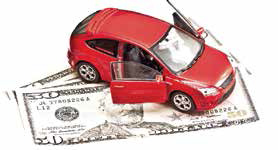

If you are like most people shopping for a new car safety ranks high among things you're looking for. Every new car must meet certain federal safety standards, but that doesn't mean that all cars are equally safe. There are still important safety differences, and some vehicles are safer than others.
Many automakers offer safety features beyond the required federal minimums. The following safety features should be considered when purchasing a car:
Vehicle size and weight
The laws of physics dictate that larger and heavier cars are safer than lighter and smaller ones. Small cars have twice as many occupant deaths each year as large cars. In crashes involving smaller and larger vehicles, heavier vehicles drive lighter ones backwards decreasing the forces inside the heavier car and increasing them in the lighter car.
Restraint systems
Belts, airbags and head restraints all work together with a vehicle's structure to protect people in serious crashes. Lap/shoulder belts hold you in place, reducing the chance you'll slam into something hard or get ejected from the crashing vehicle. If you aren't belted, you'll continue moving forward until something suddenly stops you - often a hard interior surface that will cause injuries.
Anti-lock brakes
When you brake hard with conventional brakes the wheels may lock and cause skidding and a lack of control. Anti-lock brakes pump brakes automatically many times a second to prevent lockup and allow you to keep control of the car.
If you were trained to brake gently on slippery roads or pump your brakes to avoid a skid, you may have to unlearn these habits and use hard, continuous pressure to activate your antilock brakes. Anti-lock brakes may help you keep steering control, but they won't necessarily help you stop more quickly.
Daytime running lights
Daytime running lights are activated by the ignition switch. They are typically high beam headlights at reduced intensity or low beam lights at full or reduced power. By increasing the contrast between a vehicle and its backgrounds and making the vehicles more visible to oncoming drivers, these lights can prevent daytime accidents.
On the road experience
Other design characteristics can influence injury risk on the road. Some small utility vehicles and pickups are prone to rolling over. "High performance" cars typically have higher than average death rates because drivers are tempted to use excessive speed. Combining a young driver and a high performance car can be particularly dangerous.